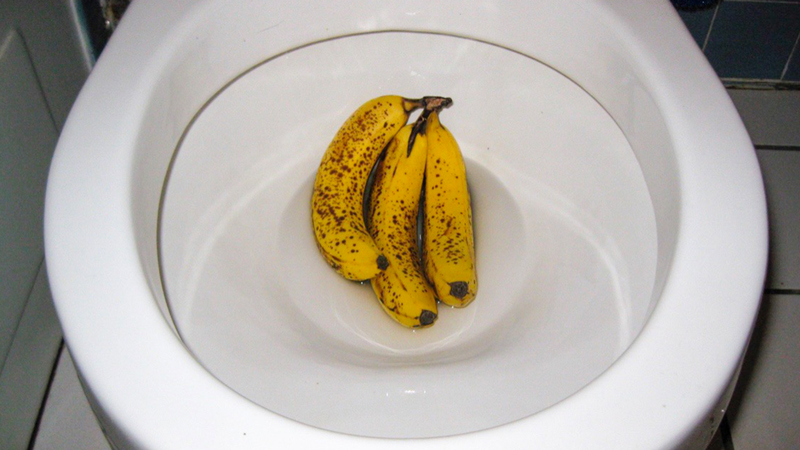Is it Permitted to Dispose of Food Down the Toilet?
Is it Permitted to Dispose of Food Down the Toilet?
Blog Article
How do you feel in relation to Flushing Food Down the Toilet??

Intro
Lots of people are usually faced with the predicament of what to do with food waste, specifically when it involves leftovers or scraps. One usual question that arises is whether it's okay to purge food down the toilet. In this post, we'll delve into the reasons individuals could consider purging food, the effects of doing so, and alternative methods for appropriate disposal.
Reasons why people could think about flushing food
Absence of understanding
Some individuals might not know the possible injury caused by purging food down the toilet. They might incorrectly believe that it's a safe technique.
Convenience
Purging food down the commode may feel like a quick and easy solution to dealing with unwanted scraps, specifically when there's no close-by trash bin readily available.
Idleness
In many cases, people may merely pick to flush food out of sheer negligence, without thinking about the consequences of their actions.
Consequences of flushing food down the toilet
Environmental impact
Food waste that winds up in waterways can add to pollution and injury marine ecosystems. In addition, the water utilized to flush food can strain water resources.
Plumbing issues
Flushing food can cause clogged pipelines and drains, causing pricey pipes repairs and troubles.
Kinds of food that ought to not be flushed
Coarse foods
Foods with fibrous appearances such as celery or corn husks can get entangled in pipes and cause blockages.
Starchy foods
Starchy foods like pasta and rice can absorb water and swell, leading to clogs in pipes.
Oils and fats
Greasy foods like bacon or cooking oils should never be purged down the commode as they can solidify and create blockages.
Proper disposal methods for food waste
Utilizing a garbage disposal
For homes furnished with garbage disposals, food scraps can be ground up and purged with the plumbing system. Nevertheless, not all foods appropriate for disposal in this fashion.
Recycling
Particular food product packaging products can be reused, lowering waste and minimizing environmental impact.
Composting
Composting is an environment-friendly means to get rid of food waste. Organic materials can be composted and made use of to improve soil for horticulture.
The value of proper waste management
Lowering environmental injury
Proper waste monitoring practices, such as composting and recycling, aid lessen pollution and protect natural resources for future generations.
Securing pipes systems
By staying clear of the method of flushing food down the commode, homeowners can stop pricey pipes fixings and keep the integrity of their pipes systems.
Conclusion
Finally, while it might be alluring to purge food down the commode for comfort, it is essential to comprehend the potential consequences of this activity. By embracing proper waste monitoring techniques and throwing away food waste responsibly, people can contribute to much healthier pipes systems and a cleaner environment for all.
FLUSH FOOD DOWN THE TOILET?
FLUSHING FOOD CAN CAUSE BLOCKED DRAINS IN YOUR HOME
All of the plumbing fixtures in your home are connected to the same sewer pipe outside of your home. This outdoor sewer pipe is responsible for transporting all the wastewater from your home to the Council sewer mains. Even small pieces of food that go down the kitchen sink can cause problems for your sewer. It should therefore be obvious that flushing larger bits of food, such as meat, risks a clog in either the toilet itself or the sewer pipes. Flushing greasy food is even more problematic because oil coagulates when it cools, coating the interior lining of your pipes.
THE TOILET IS NOT A BIN
Food isn’t the only thing that people shouldn’t be flushing down the toilet. People use the toilet to dispose of all kinds of things such as tampons, makeup wipes, dental floss, kitty litter and even underwear. Water goes to great lengths to educate residents about the high costs and stress placed on wastewater treatment systems simply from people flushing the wrong stuff down the toilet. It costs taxpayers millions of dollars each year, and homeowners thousands in blocked drain repairs.
FLUSHING FOOD IS A WASTE OF WATER
Flushing food is a waste of our most precious resource - water. In June this year Level 1 water restrictions were introduced to protect water supply from drought conditions. Much of New South Wales continues to be affected by prolonged drought with recent figures revealing up to 97 per cent of the state remains in drought. Depending on whether you have a single or dual flush toilet, every single flush uses between five and 11 litres of water. In the current climate this is a huge amount of water to be wasting on flushing food that should be placed in the bin (or better yet, the compost).
https://www.jabplumbingsolutions.com.au/blog/can-you-flush-food-down-the-toilet

I found that entry about What Can Happen If You Flush Food Down the Toilet? while doing a lookup on the web. In case you enjoyed reading our blog posting plz make sure you remember to pass it around. I am grateful for being here. Please visit our site back soon.
Details Here Report this page